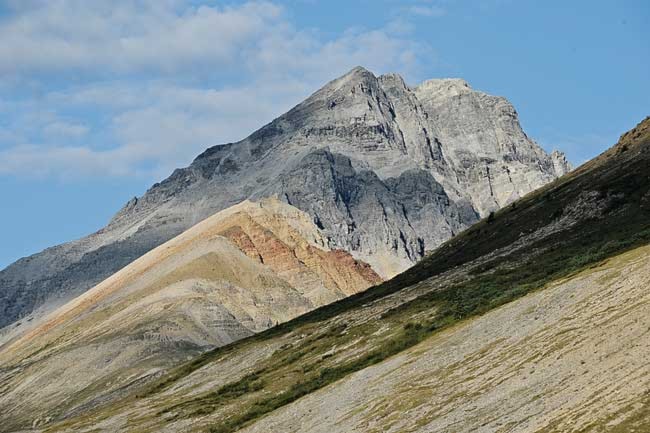UPDATED
A Yukon Supreme Court judge has struck down the Yukon government’s plan for the Peel watershed.
In a decision released Tuesday morning, Justice Ron Veale sided with First Nations and ruled that the Yukon government strayed from the process when it introduced its own land use plan at a late stage.
The news saw cheers and happy tears in the offices of the Yukon Conservation Society and the Canadian Parks and Wilderness Society Yukon. Those groups joined the First Nations of Nacho Nyak Dun and Tr’ondek Hwech’in as plaintiffs in the case.
“We got it at 9:02, and I immediately scrolled down to the conclusion of the 90 page document, and I wanted to get the answer quick,” said Christina Macdonald, executive director with the conservation society. “And there it was, plain and simple. We got exactly what we asked for. There was a stunned moment of silence and then elation.”
“It’s pretty jubilant,” said Gill Cracknell, executive director with CPAWS, on Tuesday afternoon. “We’ve had people coming and going and rushing in and rushing upstairs and giving us hugs and there have been tears and celebrations. It’s a historic day for us.”
The Peel commission recommended protecting 80 per cent of the watershed from development. The government’s plan protected only 29 per cent from new mineral staking.
The Yukon government has always insisted it followed the letter of the law. But that’s not good enough when it comes to agreements that involve aboriginal rights, said Veale.
“The plain reading interpretation endorsed by the government does not enhance the goal of reconciliation and is inconsistent with the honour and integrity of the Crown.”
Veale ruled that the government must consult Yukoners and First Nations again on the commission’s final recommended plan, and that afterwards it can only make modifications that were proposed in detail at an earlier stage. The government may not reject the plan at the end of the process, according to the judgement.
The judge specifically excludes the possibility that the government revisit the questions of balance between protection and development, and options for building new roads or other surface access into the area.
On these questions the government never provided the commission with any detailed proposal so that it could consider what the government wanted, and why, wrote Veale.
“This level of detail was insufficient for consultation and lacked any tangible or practical guidance for the planning commission.”
Veale compared the government’s actions to a Supreme Court of Canada case about the compensation of provincial court judges. For the government to call generally for “a more balanced plan” with more “options for access” is akin to telling a judicial compensation commission that judges deserve a raise, without spelling out how much or why, wrote Veale.
At the main hearing in July, lawyer Thomas Berger argued on behalf of the plaintiffs that the judge should rule that the final recommended plan is the approved plan for the watershed.
At a subsequent hearing in October, Berger softened his stance, acknowledging that such a ruling would not allow for a final consultation before a plan is approved. The plaintiffs got exactly the remedy they asked for that stage of the process.
“This is a remarkable judgment,” wrote Berger in a statement on Tuesday.
“The vindication of this process is a great victory for the First Nations, the environmental organizations, and all Yukoners. In the end, one of the world’s last great wilderness areas will be protected.”
“I’m very thrilled at the news. It’s a great victory,” said Tr’ondek Hwech’in Chief Roberta Joseph from the First Nation office in Dawson on Tuesday.
“I would like to express our appreciation and gratitude to the many Yukoners and people nationally and internationally who contributed and supported this effort in big ways and little ways. It’s so much appreciated.”
The N.W.T.-based Gwitch’in Tribal Council was an intervenor in the case. The Gwitch’in people of the Mackenzie delta have called the Peel watershed home for millennia.
Jeff Langlois, lawyer for the council, said this week’s decision makes a broader point about all collaborative processes that come out of land claims agreements.
The decision confirms that “governments are committed to participating in those meaningfully, and they can’t just retain the final say and re-write everything that the collaborative process has come up with.”
The Gwitch’in Tribal Council hosted a celebratory soup and bannock dinner in Inuvik yesterday evening.
The Yukon government has 30 days to decide if it will appeal the decision to the Yukon Court of Appeal.
Nacho Nyak Dun Chief Ed Champion said the government should choose to reconcile with First Nations instead of appealing the decision.
“If they want to appeal it, we have no choice but to fight this to the end. We have no choice. We will just keep fighting it. And all that ends up happening is it just irritates and creates more friction and hardship between the First Nations and the government.”
Conflict with First Nations, and the Peel issue in particular, is a big part of the reason Yukon has fallen in the Fraser Institute’s ranking of mining jurisdictions, and had the worst economy in the country in 2013, said Champion.
“If Yukon government will take a position of reconciliation and not appeal this, it would certainly go a long way with us, and other First Nations, to the benefit of all Yukoners.”
Contact Jacqueline Ronson at
jronson@yukon-news.com
